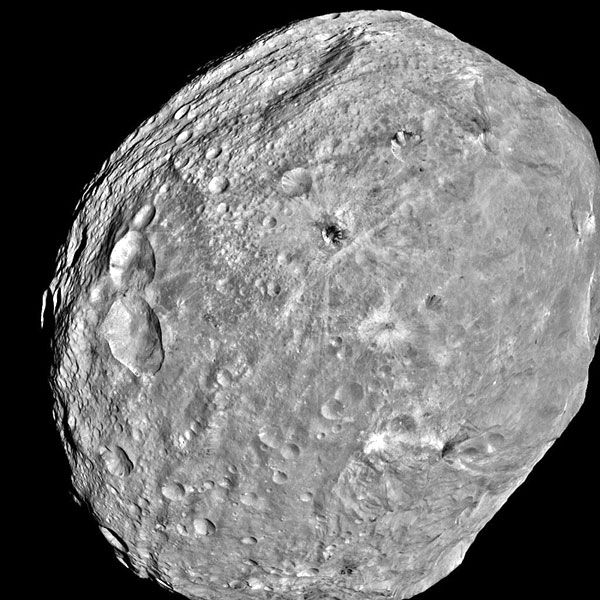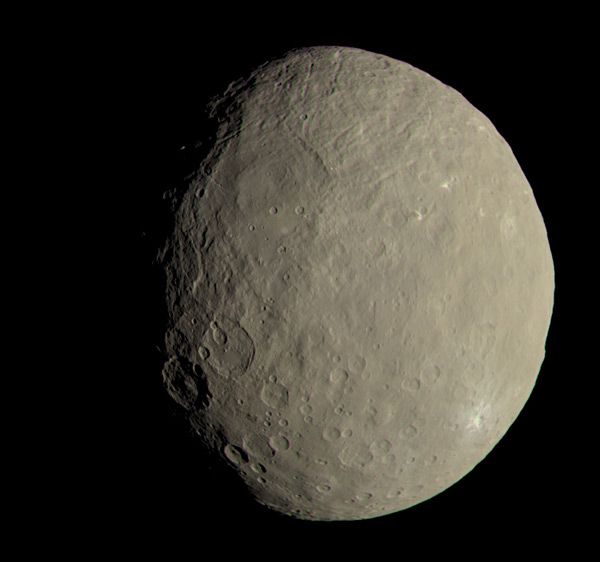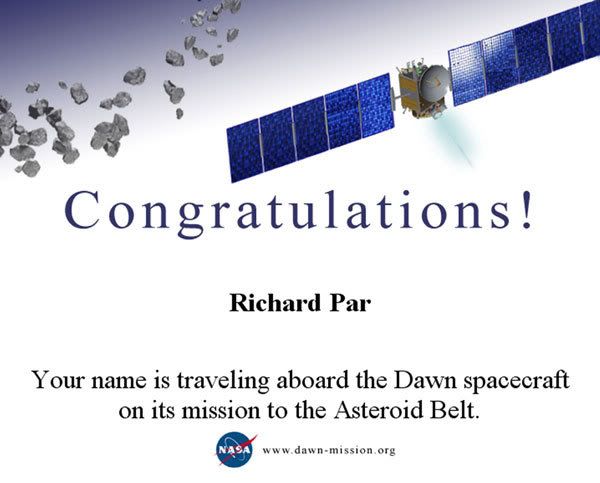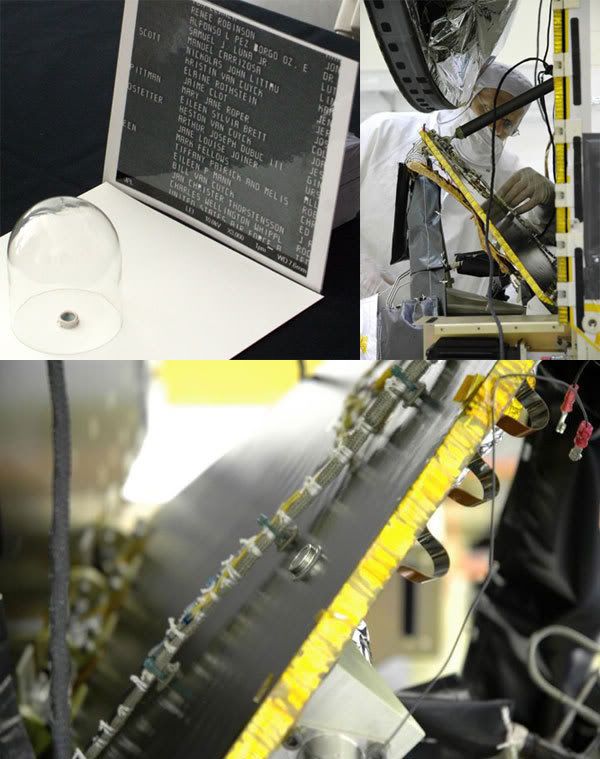
Tony Gray and Robert Murray for NASA / Carleton Bailie for United Launch Alliance
Dawn Mission Celebrates 10 Years in Space (Press Release)
Ten years ago, NASA's Dawn spacecraft set sail for the two most massive bodies in the asteroid belt between Mars and Jupiter: giant asteroid Vesta and dwarf planet Ceres. The mission was designed to deliver new knowledge about these small but intricate worlds, which hold clues to the formation of planets in our solar system.
"Our interplanetary spaceship has exceeded all expectations in the last decade, delivering amazing insights about these two fascinating bodies," said Chris Russell, principal investigator of the Dawn mission, based at the University of California, Los Angeles.
Since its launch on Sept. 27, 2007, Dawn has achieved numerous technical and scientific feats while traveling 4 billion miles (6 billion kilometers). It is the only spacecraft to orbit two extraterrestrial solar system targets. It is also the only spacecraft to orbit a dwarf planet, a milestone it achieved when in entered orbit around Ceres on March 6, 2015. The spacecraft's ion propulsion system enabled Dawn to study each of these worlds from a variety of vantage points and altitudes, creating an impressive scrapbook of 88,000 photos. Additionally, Dawn's suite of instruments enabled it to take a variety of other measurements of Vesta and Ceres, revealing the contrasting compositions and internal structures of these two bodies.

NASA / JPL - Caltech / UCLA / MPS / DLR / IDA
Vesta Highlights
Scientists learned a great deal about Vesta's geological features and composition during Dawn's 14 months of exploration there. A notable discovery was that Rheasilvia, a giant basin in Vesta's southern hemisphere, was even deeper and wider than scientists expected based on telescopic observations from Earth. It spans more than 310 miles (500 kilometers) and pierces about 12 miles (19 kilometers) into Vesta. The center of the crater also hosts a mountain twice the height of Mt. Everest -- the tallest feature seen in Dawn's 1,298 orbits of Vesta.
The massive punch into Vesta that carved out this crater happened about 1 billion years ago and caused huge amounts of material to rain down on the surface. The net result is that the surface of the southern hemisphere of Vesta is younger than the northern hemisphere, which retains a hefty record of craters. The Rheasilvia impact also created dozens of gorges circling Vesta's equator. Canyons there, some of which formed from an earlier impact, measure up to 290 miles (465 kilometers) in length.

NASA / JPL - Caltech / UCLA / MPS / DLR / IDA
Ceres Highlights
One of Dawn's biggest revelations at Ceres is the extremely bright, salty material in Occator Crater that gleams amid an otherwise dark area. What appeared to be a single white blob at a distance turned out to be a smattering of many bright areas called faculae. The central bright area, Cerealia Facula, has a dome at its center with radial fractures across it that appears reddish in enhanced color images. This "bright spot" suggests Ceres was geologically active in the very recent past, when briny water rose to the surface and deposited salts. Just to the east are the Vinalia Faculae, a constellation of less-bright spots distributed along fractures that also intrigue scientists. Ceres hosts more than 300 small bright areas, with some thought to host ice at northern latitudes.
Another huge surprise at Ceres was Ahuna Mons, which scientists believe formed as a cryovolcano, a volcano that erupted with salty water in the past. This "lonely mountain," 3 miles (5 kilometers) high on its steepest side, is unlike anything else on Ceres and remains a thriving research topic. Though both Ahuna Mons and Occator appear dormant, they suggest that liquid water flowed once beneath the surface of Ceres, and may even still be there today, if it is enriched in salts that would lower its freezing point.

Dawn Science Continues
"The science team is still actively exploring the troves of data that Dawn has delivered so far, comparing these two fossils of the early solar system," said Carol Raymond, Dawn deputy principal investigator, based at NASA's Jet Propulsion Laboratory, Pasadena, California.
Since March 2015, Dawn has orbited Ceres 1,595 times. It remains healthy, currently in a 30-day elliptical orbit collecting data on cosmic rays in the vicinity of Ceres.
"This continues to be a mission for everyone who yearns for new knowledge, everyone who is curious about the cosmos, and everyone who is exhilarated by bold adventures into the unknown," said Marc Rayman, mission director and chief engineer, based at JPL.
Dawn's mission is managed by the Jet Propulsion Laboratory for NASA's Science Mission Directorate in Washington. Dawn is a project of the directorate's Discovery Program, managed by NASA's Marshall Space Flight Center in Huntsville, Alabama. UCLA is responsible for overall Dawn mission science. Orbital ATK, Inc., in Dulles, Virginia, designed and built the spacecraft. The German Aerospace Center, the Max Planck Institute for Solar System Research, the Italian Space Agency and the Italian National Astrophysical Institute are international partners on the mission team.
Source: Jet Propulsion Laboratory
****


No comments:
Post a Comment